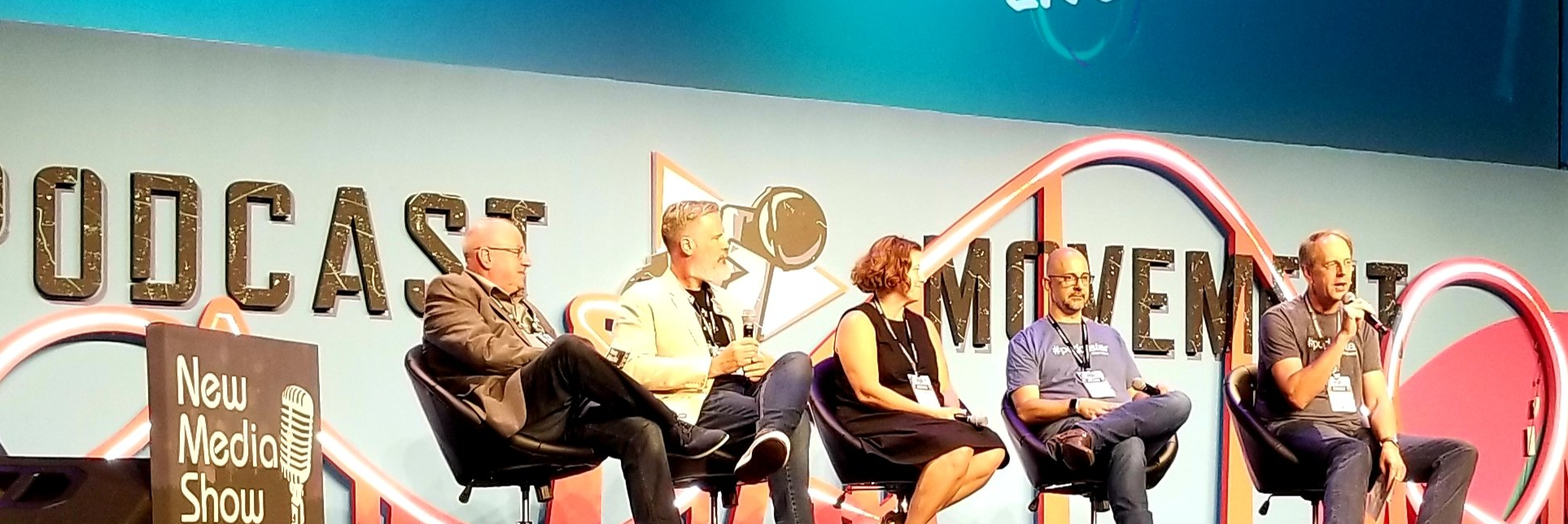 By Rob Greenlee
By Rob Greenlee
Predicting the coming year of podcasting is a little more challenging than usual because, in my mind, the 13-year-old medium has been maturing very fast. Unfortunately, growth and innovation will be slow in coming this next year. It is true that podcasting’s best days are ahead and we do have many developing trends that will enable the medium to grow its creators and listeners.
For a little perspective, the podcasting medium was a revolution when it began between 2004 through 2007. Since then, podcasting has been chugging along at a slow, unrevolutionary but steady growth trajectory for many years. It is true that podcasting awareness and listening grew a little faster over the past 2 years with the heightened media coverage of the reality and fictional storytelling podcasts.
The continuing evolution of podcasting in 2017 will be good for the industry, but those breakthroughs in media coverage and technology innovation will be lacking this next year. I would really like to be all glowing in my predictions for podcasting in 2017, but I believe we need to be realistic and understand that the significant market improvements around this medium have mostly happened already. What we will see is incremental improvements in these core areas next year.
I am hoping to be surprised by the emergence of a new content genre or audio experience that will drive the next big wave of awareness for podcasting. It is very likely that this content genre could be big budget storytelling podcasts coming out of Hollywood and large corporate investments in brand marketing motivated original content productions.
I also think that independent podcasters will continue to be the dominant force in podcasting with most listeners enjoying those smaller shows across many genres. Many are predicting the decline of the independent smaller podcasters, but that is wishful thinking by those from larger shows wanting less competition in the podcasting market.
Below are my thoughts around the important podcasting evolutions in 2017.
Listen to “SLS94: Nine Evolutions of Podcasting In 2017” on Spreaker.
9. Hosting distribution platforms will develop better tools to help monetizing smaller and larger shows easier.
The need to assist monetization of shows with smaller download numbers will be given more attention in 2017. New easy to use tools will be available to all levels of podcasts and on demand audio shows. These tools will offer many levels of monetization opportunities from advertising with host and talent reads. The combination of programmatic ad buying tools with powerful campaign CMS tools will appear to enable trafficking advertiser messages across hundreds of shows in one campaign. This should bring revenue to smaller shows that are producing great content and building loyal listener followings.
I do not think most premium paid podcast shows will produce very much revenue this coming year, as has been the case for every other year. A few very large shows will find some sales revenue from this, but very few shows that convert to premium audio will generate significant revenue like has been done for many years around audio books and music. That will continue into 2017 because the tools for doing this really need some technological innovation and should be based on open RSS with password protected episodes and open feeds.
8. Interactive Advertising Bureau’s (IAB) continued march towards podcasting download metric standards.
The IAB Podcasting working group that represents most of the largest players in podcasting today will continue to take a leadership role around creating foundational advertising best practices and measurement standards. This group has put out a guidelines document in 2016, but in 2017 we should see more technical standards recommendations.
https://www.iab.com/
7. In-car dash consumption of podcasts will continue to replace radio listening in the car.
Some will tell you that In-Car entertainment systems are not important to the growth and development of on demand audio and podcasting because these systems are generally disliked by consumers and are just glorified Bluetooth audio player devices. At this stage, these in-dash systems are integrating complete and software updatable solutions and are being deployed in all new cars. This wave of change is in full deployment that will take many years to be fully realized. The impact and significance of it will grow in importance and be felt more the new year as more of these cars will be sold every day. Internet data connections in these cars will continue to get cheaper and software upgrades will continue to improve these experiences. This evolution will truly start to replace radio for many drivers with terrific on-demand audio podcasting content.
6. Personal voice agents (Alexa/Echo, Google Home, Siri and Cortana) devices will enable more in-home listening growth.
Smart voice agents will have a larger impact on podcasting in 2017 as these devices and services get integrated into all sorts of devices, including car in-dash, kitchen appliances, and living room and bathroom devices with internet connections. The biggest impact will come from the Amazon Echo with Alexa skills that enable server side voice services to include search and play of audio podcasts by voice request.
5. Dynamic ad insertion partnered with Programmatic Advertising Buying and Trafficking tools technology will improve.
Dynamic ad insertion technology enables audio advertising and other segmented audio to be dynamically inserted by servers into mp3 audio files in pre-roll, mid-roll and post-roll in a specified location in the mp3 audio file, much like a book being slid onto a bookshelf of books. In the coming new year, we will see more use of this technology to enable all levels of shows to better monetize. This tool will be combined with online programmatic ad buying and campaign trafficking tools to more easily distribute commercial advertising messages.
4. Some host read advertising will morph into more host-like “Talent Reads”.
Podcast advertising was built on what is called “Host Endorsed Advertising Reads” and, in the new year, it will continue to grow in importance to the increasing advertising revenue in podcasting today. The issue is related to talent and time needed to record these host-endorsed reads. Thus, we will see a shift towards having talented voice-over artists record more host reads. We will see two tiers of host reads: ones done by the actual show host and those done by talented ad readers that produce the advertising message in the same method as the show host would record them.
3. Short-segment social media sharing and playback growth.
Podcasts today grow audiences by word of mouth. We will see more platforms support the social media sharing of short segments from audio programs on social media platforms such as Facebook and Twitter.
2. Live audio recording to podcasting grow.
One of the leading trends online has been and will continue to be enabling Live video and audio. An example of this is the recent decision on the part of Facebook to enable Live audio streaming on its closed platform. Some podcasting distribution platforms combine live audio streaming and recording to then be encoded into mp3 files. Content creators and listeners like the interactivity of Live. Therefore, this will continue to grow in 2017.
1. Android takes a larger share of the podcasting listening market.
Mobile devices, including Smartphones running Android OS, will continue to progressively and more rapidly expand podcast listener audiences in 2017.
